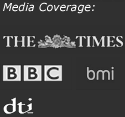What is a registered design?
Once a new design is registered the owner has the right to stop others from making or selling the same or similar designs. Where products are distinguished in the marketplace by their appearance (eg, furniture) design registrations can help. The registrable design may be:
- a new article (eg, the shape of a kettle)
- a new part of an article (eg, an elaborate handle for a knife)
- a new two-dimensional pattern or ornament suitable for use on an article (eg, a floral pattern on plate, or curtains, or clothing etc.).
Initially the right lasts for five years, renewable every five years to a maximum of 25 years. Like any other business commodity, it can be sold or licensed under terms agreed with the registered owner. The design protected by registration can also enjoy parallel protection through copyright or unregistered design right if appropriate.
How are designs registered?
An application for design registration only requires a few pictures showing different views of the design, and an indication as to what the design might be applied to (though this does not limit the legal protection just to that application). Registration is possible even for handicraft items and one-off items.
There must have been a 'freedom of design' in the creation, so where a jug has a distinctive shape it is registrable because it could have had many other shapes and still have been a jug. However, where form is dictated by function, or dictated by the need to fit with other parts (eg: a brake pad which needs to fit in the callipers) no registration is possible.
The design must be new on the day the application is filed, that is to say not likely to be previously known anywhere in the world by a designer working in the same field. Furthermore, the design must have 'individual character'. This means it must not give the notion of 'déjà vu' in the mind of an 'informed user', namely one familiar with the product in question who is not a designer. For example, if a stationer would not easily discern the differences between an existing pen and a new pen seeking registration, the latter would fail.
The design will still be judged as novel on the filing date even if the designer has disclosed their design (eg, sold it) at any time in the 12 months prior to filing. This one-year 'grace period' allows designers to test the market before deciding if registration is appropriate. However, any disclosures by others of designs which are the same or similar, even if they occur during those most recent 12 months, will count against the applicant when assessing novelty.
Is there an international registration for designs?
At the moment there is no all-embracing international registration for designs. To ensure protection for a design outside the UK, separate applications for registrations need to be made in each country in which you want protection. However, Europe has recently harmonised its rules so the same registrability criteria and duration of protection now apply in all EC member states. A single EU-wide right, administered by OHIM in Alicante, became available during 2003.
Useful Contacts
Patent Office
Copyright Directorate
Harmsworth House
13-15 Bouverie Street
London
EC4Y 8DP
Tel: 0845 950 0505
Website: http://www.patent.gov.uk/
E-mail: enquiries@patent.gov.uk



